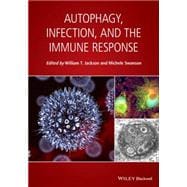The relationship between infection and immunity and autophagy, a pathway of cellular homeostasis and stress response, has been a rapidly growing field of study over the last decade. While some cellular processes are pro- or anti-infection, autophagy has been proven to be both: a part of the innate immune response against some microbes, and a cellular pathway subverted by some pathogens to promote their own replication.
Autophagy, Infection, and the Immune Response provides a unified overview of the roles of cellular autophagy during microbial infection. Introductory chapters ground the reader by delineating the autophagic pathway from a cellular perspective, and by listing assays available for measuring autophagy. Subsequent chapters address virus interactions with autophagy machinery, the various roles of autophagy parasitic infection, and interactions of bacteria with the autophagic pathway. Concluding chapters explore the relationships of autophagy to systemic immune responses, including antigen presentation, ER stress, and production of IFN-gamma.
Designed as a resource for those interested in initiating studies on the relationship between autophagy and infection or immunity, Autophagy, Infection, and the Immune Response combines practical state-of the art technique descriptions with an overview of the wide variety of known interactions between pathogens and the autophagic pathway.









